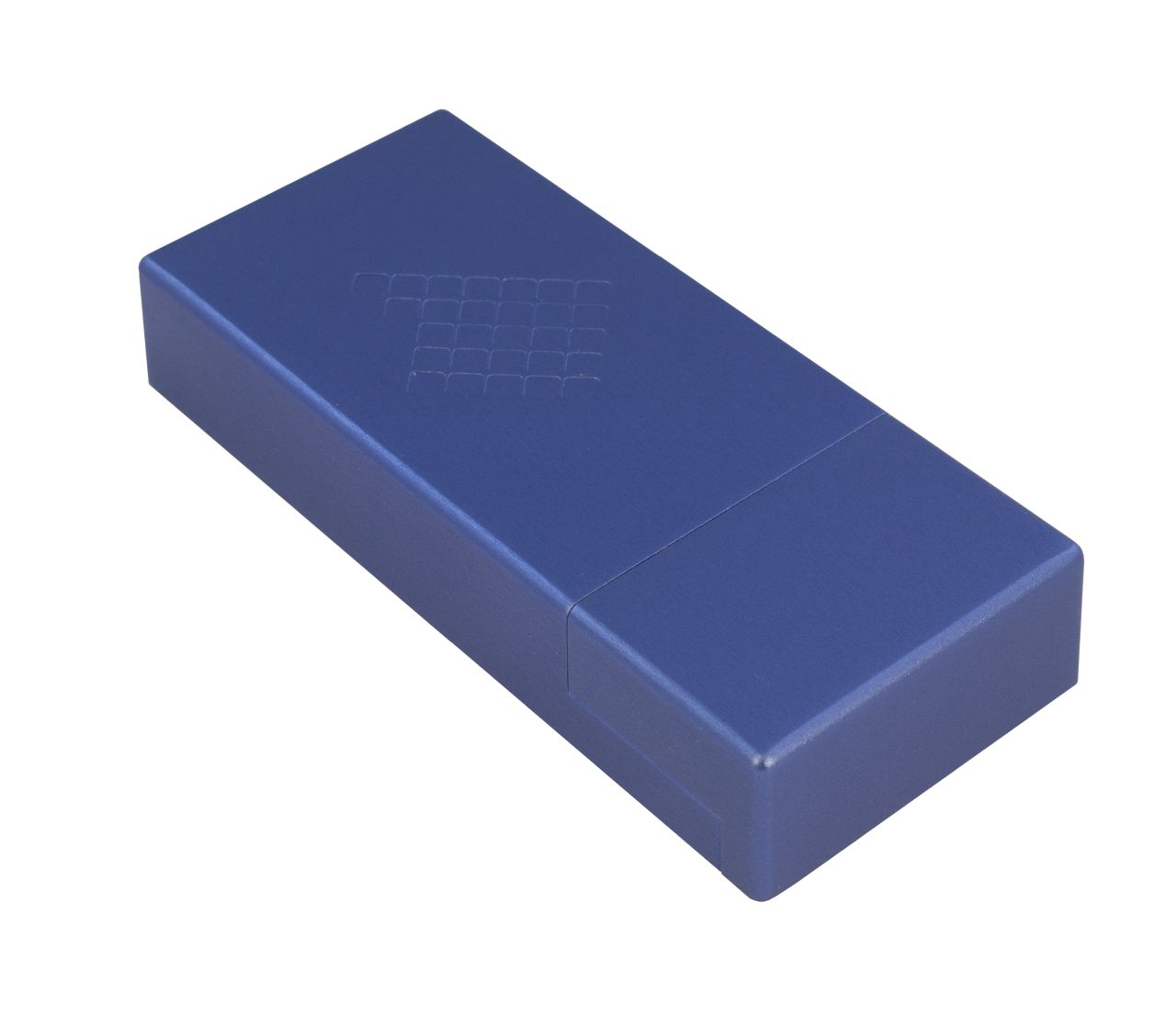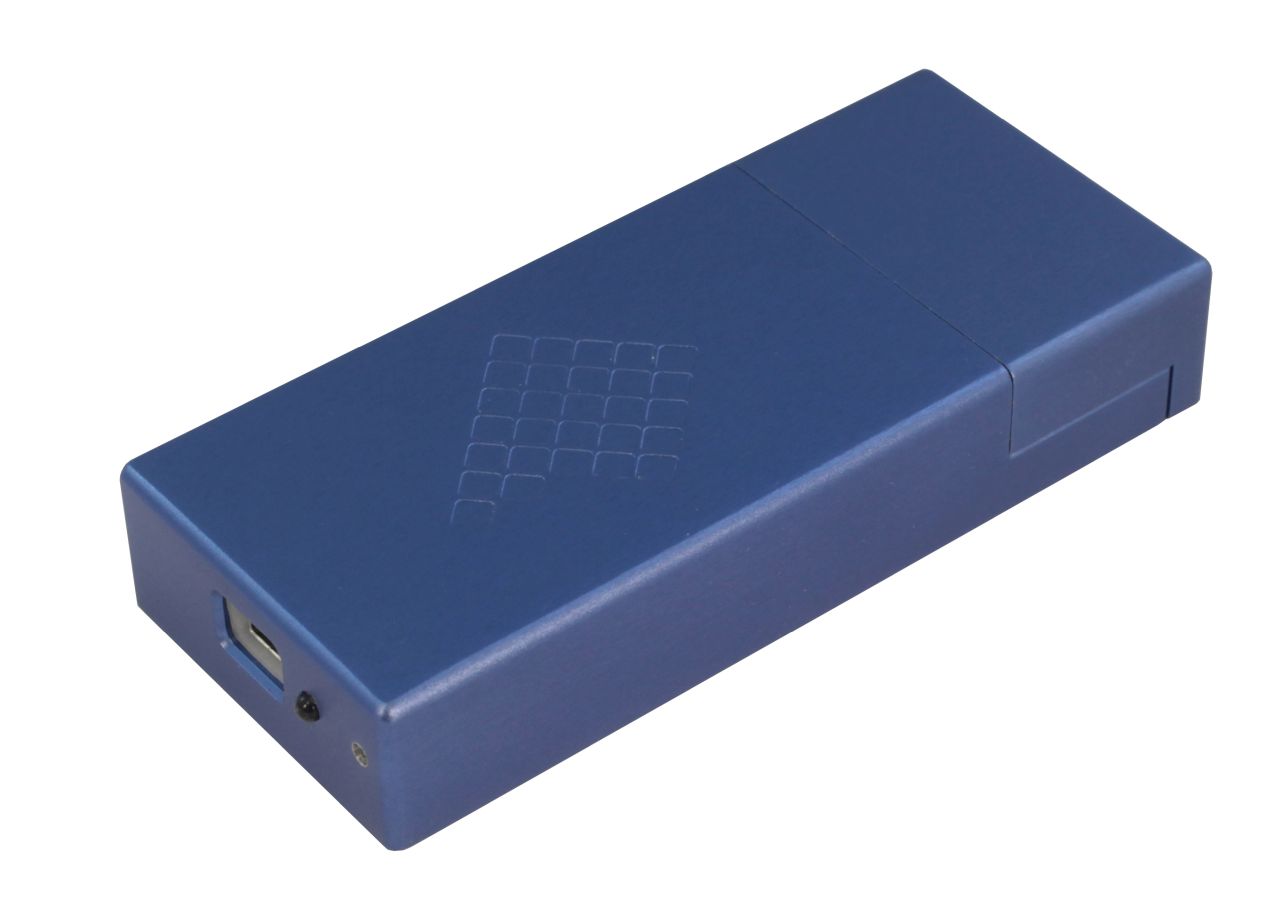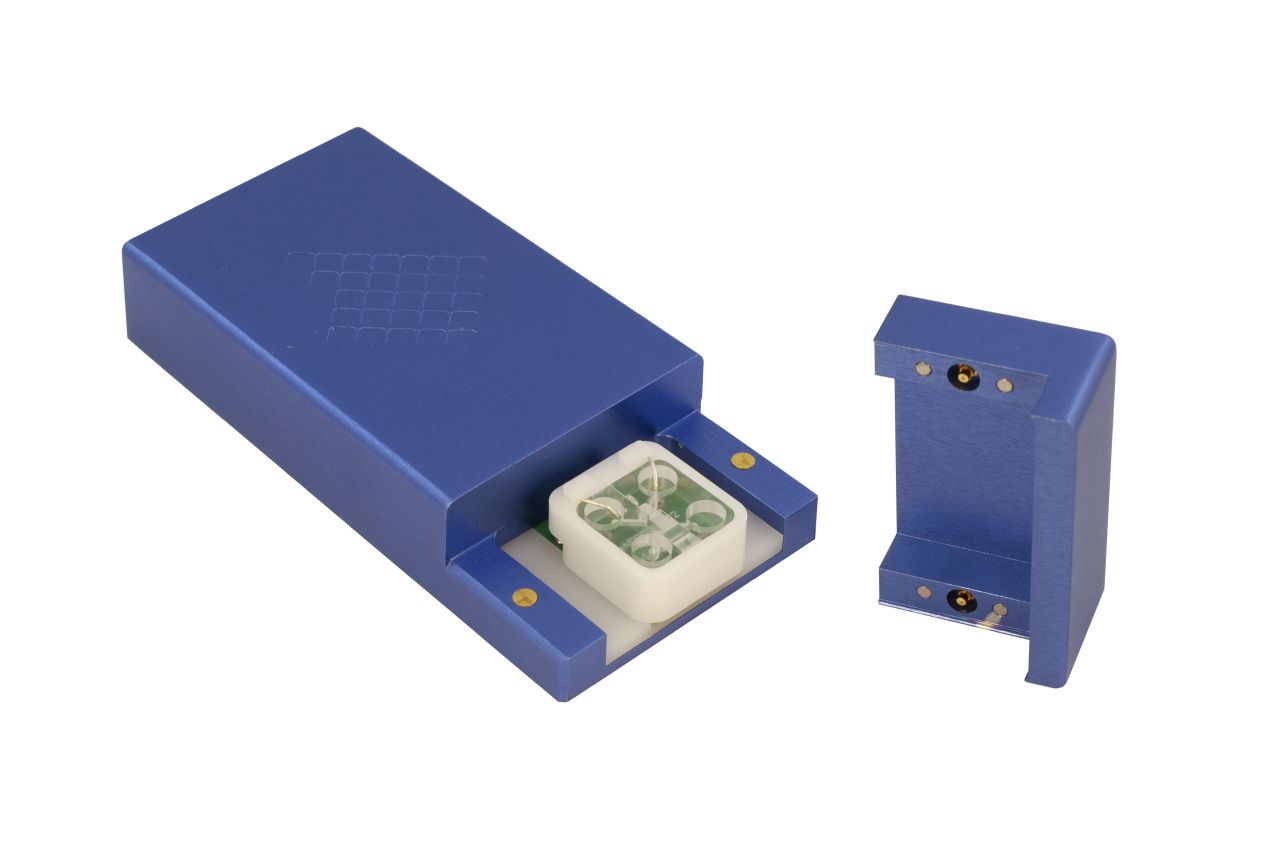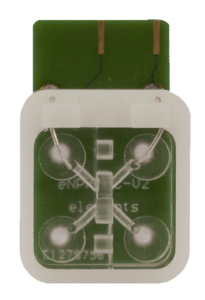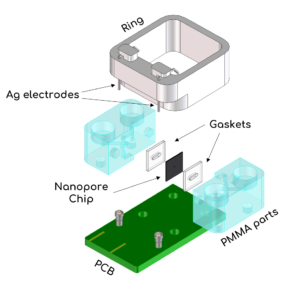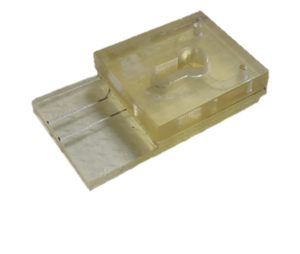Handheld and fully integrated 1-channel high-current amplifier for low-noise measurements. Suitable for large currents generated in solid-state nanopores.
Nanopore Reader HC
Flow cells for Solid-State Pores
Nanopore Flow cell
A microfluidic system serving as the interface between the nanopore chip and the current reader. The nanopore chip can be easily changed without tools and the flow cell is reusable.
Nanopore Chip: Vertical
Chambers Volume: 10 µl min – 60 µl max
Flow cell Materials: PMMA or Teflon
Replaceable External Silver Wires
Nanopore Chip not Included, buy it from Norcada
Nanopore Chip Compatibility: Square 4×4-5×5 mm², 200-700 µm thick and round 3×3 mm², 200 µm thick
Reusable flow cell
Micropore Flowcell
A microfluidic system serving as the interface between the micro-aperture and the current reader. The pore dimensions are customisable, starting from 1 µm and larger, and the flow cell is disposable.
Micro-aperture: Horizontal
Chambers Volume: 20 µl bottom compartment- 80 µl top compartment
Flow cell Materials: Polyethylene with Polyimide foil
Integrated Printed Ag/AgCl electrodes
Customisable micro-aperture drilled in polyimide foil
Disposable flow cell
Use Cases
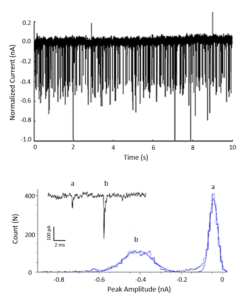 Translocation of two Nanoparticle Populations using a Micropore Flow cell
Translocation of two Nanoparticle Populations using a Micropore Flow cell
Representative 10-second recording of resistive pulses measured in the micropore flow cell after the addition of polystyrene nanoparticles, 100 and 350 nm in size, in a 1:1 mixture (concentration: E12 particles/mL in 1X PBS). The two apertures providing access to the bottom compartment (see panel A) were clogged after the addition of the sample in order to apply a pressure.
Histogram analysis of the peak amplitude shows two clear distinct populations, namely the 100 and the 300 nm particles. Inset shows a blow-up of two representative events.
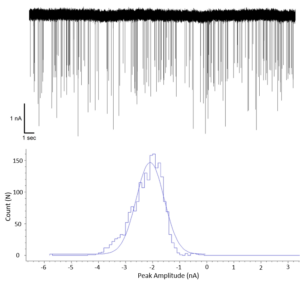 Translocation of AAVs using a nanopore chip mounted in Elements flow cell
Translocation of AAVs using a nanopore chip mounted in Elements flow cell
Translocation of purified AAV9 capsids through a 60 nm nanopore measured at 120 mV in 2 M LiCl. The histogram shows the number of events versus the peak amplitudes over a 300-second recording. The 5×5 mm chip housing the 60 nm pore was mounted in our flow cell for solid-state nanopores.
- Open input (RMS) noise (Voltage range ±700mV, Current Range ±200nA) : 9 pA rms @ 25 kHz; 32 pA rms @ 100 kHz
- Open input (RMS) noise (Voltage range ±2000mV, Current Range ±200nA) : 25 pA rms @ 25kHz; 45 pA rms @ 100 kHz
- Current ranges: ±200 nA; ±4 µA
- Voltage hold ranges: ±700mV (ultra low noise); ±2000mV (low noise)
- Parametric voltage protocols
- Max sampling rate: 200 ksps
- Available bandwidth between 625 Hz to 100 kHz
- Auto electrodes voltage offset fine compensation
- Continuous Capacitance and Resistance estimation
- USB powered
- Size & Weight: 101 x 44 x 18 mm, 140 g
User Guides
- Connection diagram
- Get started with the model cell
- Ultra low noise modality
- Nanopore Reader Voltage protocols
- How to use the Nanopore Reader adaptor to connect external recording chamber
Technical Guides

Custom device development
With our custom ASIC design technology we can help you configure specific tools and solutions for your applications.
Let us know how we can help you design the tools and software you need.


